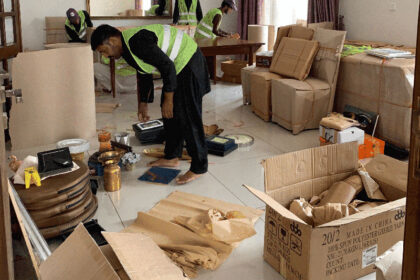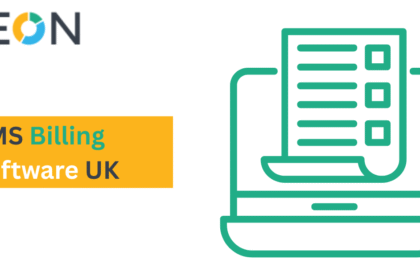Construction projects are inherently complex and involve a wide range of uncertainties. From safety hazards and financial risks to scheduling delays and legal obligations, risks can arise at any stage of the project. Effective risk management not only helps protect workers and resources but also ensures timely delivery, quality output, and long-term profitability. Below are practical tips for managing risk on construction projects, structured around the key areas where risks commonly occur.
Understanding the Nature of Construction Risks
Every construction project is unique. Site conditions, materials, stakeholders, and environmental factors all play a role in shaping risks. The first step in managing risk is to identify what could go wrong. Common risks include:
-
Financial risks such as cost overruns, material price fluctuations, and cash flow issues.
-
Schedule risks caused by weather conditions, labor shortages, or design changes.
-
Safety risks related to accidents, equipment failures, or unsafe practices.
-
Legal and contractual risks including disputes, regulatory compliance, and liability claims.
-
Environmental risks like pollution, waste management, and sustainability requirements.
By understanding these categories, project managers can prioritize areas that require close monitoring and mitigation strategies.
Conducting a Thorough Risk Assessment
A structured risk assessment lays the foundation for effective management. Before starting a project, conduct a detailed review of potential challenges. This process should include:
-
Brainstorming with stakeholders – Gather insights from engineers, contractors, and suppliers.
-
Reviewing past projects – Analyze previous lessons to anticipate recurring risks.
-
Performing site inspections – Evaluate ground conditions, access routes, and weather patterns.
-
Using risk registers – Document identified risks, their likelihood, impact, and mitigation strategies.
This proactive approach reduces surprises and ensures that all team members are aware of possible scenarios.
Developing a Strong Contractual Framework
Contracts are central to managing risk in construction projects. A well-written contract clarifies roles, responsibilities, timelines, and payment terms, reducing the likelihood of disputes. Key considerations include:
-
Clear scope of work to avoid ambiguity and scope creep.
-
Defined change order process for handling design modifications.
-
Payment schedules that align with project milestones.
-
Dispute resolution mechanisms such as arbitration or mediation clauses.
-
Insurance and liability coverage to protect against unforeseen losses.
When contracts are clear and fair, they establish a strong foundation for project delivery and minimize legal risks.
Prioritizing Health and Safety
Safety should always be the top priority in construction. Accidents not only harm workers but also cause delays, financial losses, and reputational damage. Effective safety management includes:
-
Regular training sessions for all workers and supervisors.
-
Strict adherence to safety regulations and standards.
-
Use of personal protective equipment (PPE).
-
Routine site inspections to identify and eliminate hazards.
-
Emergency response plans in case of accidents or natural disasters.
A strong safety culture creates a secure working environment, reduces insurance claims, and enhances workforce morale.
Effective Financial Planning and Control
Cost overruns are one of the biggest risks in construction. Effective financial management ensures that projects remain profitable and sustainable. Strategies include:
-
Detailed cost estimation based on current market prices.
-
Contingency budgets to cover unexpected expenses.
-
Regular financial monitoring using accounting and project management software.
-
Strong relationships with suppliers to negotiate better pricing.
-
Timely invoicing and cash flow management to avoid liquidity issues.
By keeping financial risks under control, contractors can ensure steady project progress and avoid disputes with clients.
Embracing Technology for Risk Management
Modern technology offers powerful tools to minimize risks in construction projects. Digital platforms and software solutions enhance decision-making and project control. Examples include:
-
Building Information Modeling (BIM) for accurate design visualization and clash detection.
-
Project management software to track schedules, budgets, and tasks.
-
Drones for site inspections and progress monitoring.
-
IoT-enabled equipment for real-time safety and performance tracking.
-
Cloud-based document management to ensure transparency and accessibility.
When used effectively, technology reduces errors, improves efficiency, and strengthens overall risk management.
Managing Schedule Risks Effectively
Delays are common in construction projects, but they can be controlled with proper planning. To manage schedule risks:
-
Develop realistic timelines with input from all stakeholders.
-
Use critical path method (CPM) scheduling to identify key activities.
-
Build in buffer times for weather delays or unforeseen issues.
-
Track progress regularly and adjust schedules when necessary.
-
Maintain open communication with subcontractors to ensure accountability.
Effective scheduling ensures that projects remain on track and reduces costly penalties for late completion.
Fostering Strong Communication and Collaboration
Miscommunication is a major source of risk in construction projects. Clear communication ensures that everyone works toward common goals. Best practices include:
-
Regular team meetings to review progress and challenges.
-
Transparent reporting systems to keep all parties updated.
-
Centralized communication platforms for document sharing.
-
Defined communication protocols to avoid misunderstandings.
-
Strong client relationships to build trust and align expectations.
When teams collaborate effectively, risks are identified early and resolved before they escalate.
Ensuring Regulatory Compliance
Construction projects must adhere to numerous regulations, including safety standards, labor laws, and environmental requirements. Non-compliance can result in heavy fines, project shutdowns, or legal disputes. To manage compliance risks:
-
Stay updated with local, state, and national regulations.
-
Assign compliance officers or legal advisors to monitor requirements.
-
Maintain proper documentation for inspections and audits.
-
Incorporate sustainability practices to meet environmental guidelines.
A strong compliance framework not only avoids penalties but also enhances reputation and client confidence.
Building Strong Supplier and Subcontractor Relationships
Suppliers and subcontractors play a vital role in project success. Poor performance from them can lead to delays, cost overruns, and quality issues. Risk management strategies include:
-
Pre-qualification checks to evaluate reliability and financial stability.
-
Clear contracts and performance metrics to define expectations.
-
Diversifying suppliers to avoid dependency on a single source.
-
Regular performance reviews to ensure accountability.
-
Prompt payments to build long-term trust and loyalty.
Strong partnerships reduce uncertainty and improve supply chain resilience.
Monitoring and Reviewing Risks Continuously
Risk management is not a one-time task; it requires continuous monitoring. As a project progresses, new risks may emerge while others may fade. Best practices include:
-
Regularly updating the risk register.
-
Conducting site audits and inspections.
-
Tracking key performance indicators (KPIs).
-
Holding risk review meetings with stakeholders.
-
Documenting lessons learned for future projects.
Continuous monitoring ensures that risks are detected early and dealt with promptly.
Conclusion: Turning Risk into Opportunity
Risk is an inevitable part of every construction project, but with the right approach, it can be managed effectively. By identifying potential challenges early, planning strategically, fostering strong communication, and embracing technology, construction professionals can minimize risks and improve project outcomes.




